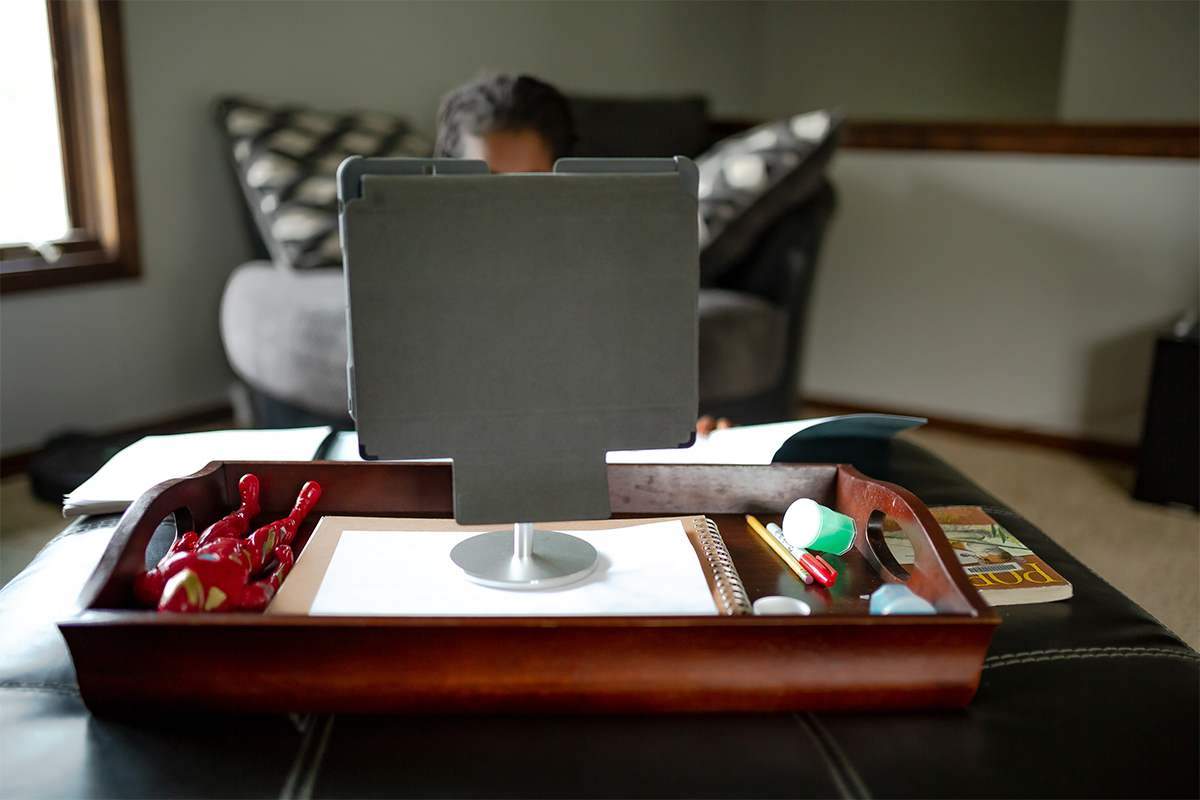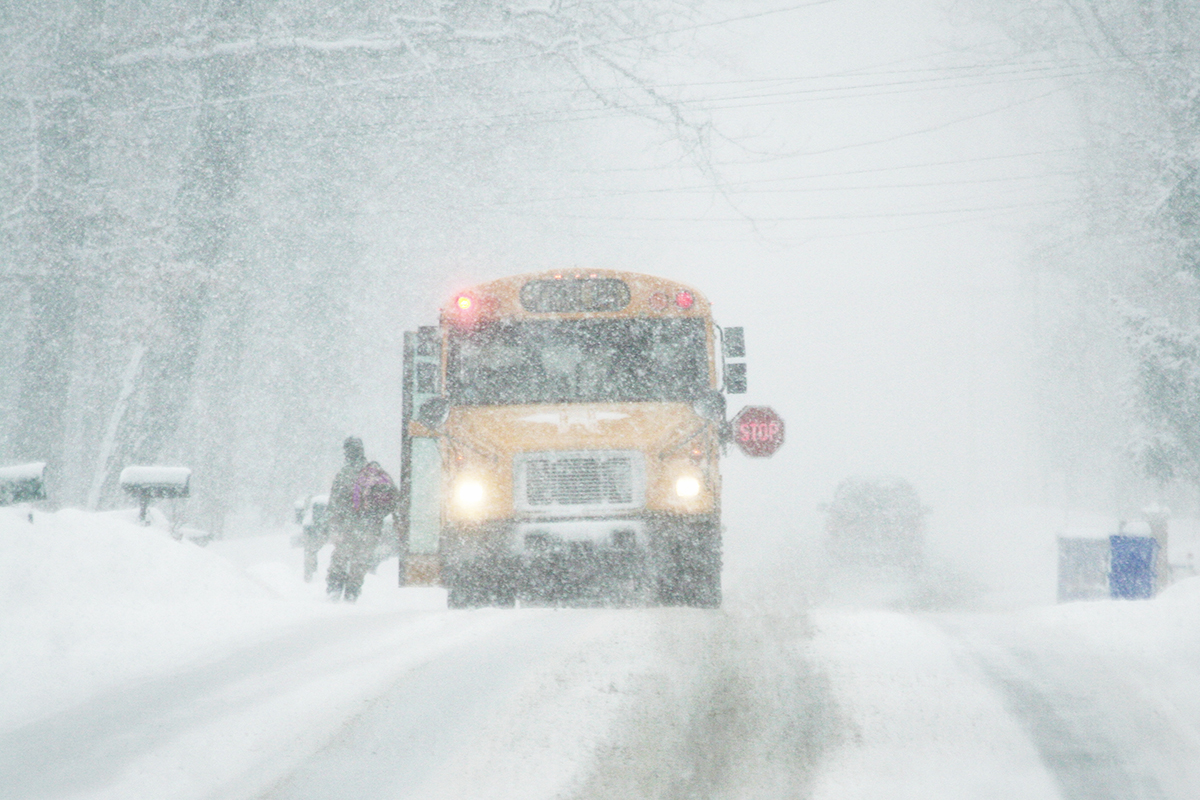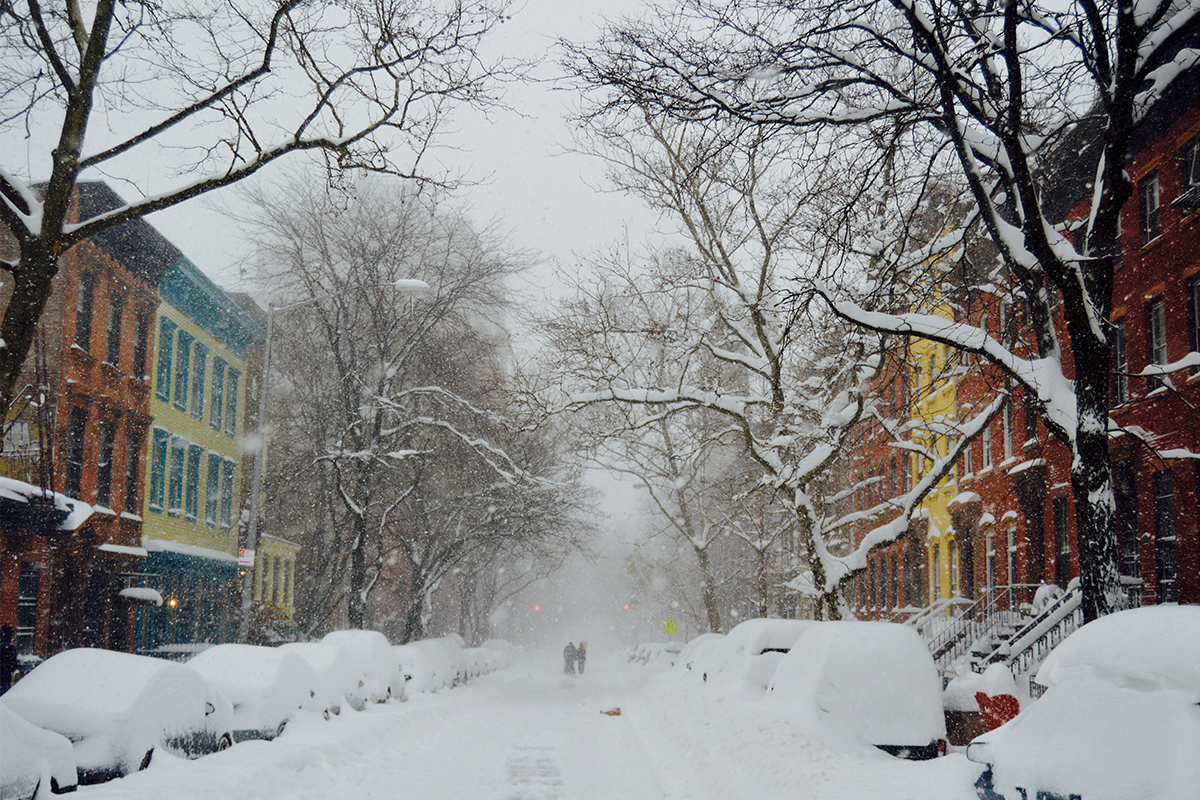Earlier this month, The Onion ran a news brief titled “Remote-Learning Student Praying It Snows Enough To Bring Down Internet Lines To Cancel School.” It described a fourth-grader “clasping her hands together and petitioning the Lord Almighty to dump at least 10 feet of powder and send 35 mile-per-hour winds that knock down fiber-optic cable lines so she doesn’t have to wake up at 7:00 a.m. to log into a Zoom meeting.”
Sounds about right. The future of one of America’s most beloved traditions is in serious jeopardy. Ahead of the COVID era’s first major snowstorm, on December 17th, cities like New York and Philadelphia vowed to continue the online learning they’ve had in place since the spring. Cities that have seen snowfall since the fall — Denver and Omaha, for instance — cancelled snow days months ago.
The refrain is understandable: 2020 wasn’t a good year for classwork, and kids need to catch up. For many, eliminating dangerous roads from the equation makes the decision a simple one. It’s little wonder that 39% of surveyed principals and district leaders have officially converted snow days to remote learning days, while another 32% are considering it. Other school administrators, however, haven’t given up. They’re making a philosophical appeal to the snow day’s memory-making magic (sledding, cookies, movies), or a logistical argument that it’s a crucial mental health recharge (sleep, family time, outdoors).
Those arguments may have a hard time finding sympathetic ears at the moment. Frankly, everyone has seen a lot of their kids this year. But what about next year? Five years from now? What would a permanent shift from snow days to remote learning mean, or look like? To make sense of the issue, while the issue is very much in flux, we recruited a panel of 10 teachers, parents and digital education experts. Spoiler alert: they don’t agree on everything. That’s okay. From ruminations on Wifi and school lunch, to proposals for “goofy days” and day-off budgeting, find their answers below.

Administrations are actively trying to answer this question
“My school and area are largely split on whether or not snow days are now a thing of the past. Some on our school board and administration think we should continue to use remote learning during inclement weather. We even had a parent at a school board meeting exclaim: “You teachers can kiss your snow days goodbye. If remote learning is good enough for now, it’s good enough for snow days.” Others contend snow days are an important way for kids and teachers to relax and take care of themselves. The breaks are a traditional part of our winter schedule, and in Michigan, we budget time in our calendar for snow days when they pop up. I think snow days will remain intact to a certain extent. A hybrid for certain areas may come into play. For example, if the snow days are isolated (one day here and there), I believe the break is welcome and good for kids and families. Many of our fondest memories as kids are the things we did on these “free” days. Then again, I think back to the winter of 2018-2019 when the polar vortex dropped temperatures so low we spent more time out of school than in school during the months of February and March. Remote learning would have been an excellent resource to slow the learning loss during that time.” — Zach VanderGraaff, K-5 music teacher at Bay City Public Schools, founder of Dynamic Music Room
Give the kids a break
“From the perspective of a child, the snow day is a reprieve from the strain and stresses of school — what is essentially their workday. Now, lest you say, “Don’t they have all summer to enjoy that reprieve?” keep in mind that these are children. They are not mini-adults, with the constitution required to work a full-time job (few adults have even cultivated that sort of dedication). The benefits of a snow day include: more sleep, more playtime, and more outdoor playtime. Children deserve a major break from stretching their brains to their limit every day. Too often, children don’t have the privilege of deciding when they need a vacation day to recharge … even though they could definitely use them. Thankfully, our children’s school chose to have a snow day earlier this month.” — Wendy Young, Marketing Assistant at Bootstrap Local, former substitute teacher, mother of two
Snow days can hurt the poorest learners
“We had a snow day on December 17, and all schools were functional, with next to zero impact on learning. Snow day or not, the lesson plans were delivered in an identical manner to a non-snow day. That’s with remote learning. Still, remember: for up to 90% of students in largely urban public schools, like in an urban areas like New York City, the only truly healthy meal they receive in a day is from school. That’s true even with remote learning, since the Department of Education (DOE) has set up DOE meal hubs allowing students or parents to pick up meals any time remote learning classes are held. All of that stops on a snow day. In fact, the DOE tweeted out that notice on their Twitter feed. On snow days, there are no DOE-provided meals to students with families at or below the poverty line. So snow days disproportionately affect the poorest learners. With parents at or under poverty line, the free or reduced lunch program is mostly responsible for ensuring one or two solid meals per day. When schools are closed, 70-80% of students can’t get a meal. — Sachin Gujral, Founder & CEO of CTS: Technology for Education
Check the Wifi
“We live in Washington State, and it’s common to experience power outages during snow storms. Some households have generators, but those who don’t are unable to use the internet. In that case, I don’t think the school should expect students to make it to “class.” In the future, there might have to be some kind of snow day to account for these situations. At the same time, I do think it’s possible that snow days are going to be obsolete moving forward. This occurred to me a few weeks ago when there was at least eighteen inches of snow outside our house but the kids were in class. — Lorie Anderson, Founder and head writer at MomInformed.com
Snow days and remote learning could work in tandem
“It’s hard to make the argument that snow days are necessary for physical and emotional wellbeing because there are thousands of schools in parts of the country where there is never snow and the kids do just fine with no snow days. But while snow days may not be necessary for well-being, they certainly can give kids a physical and mental boost if the kids get outside to enjoy the snow or catch up on their sleep. Areas of the county that frequently receive significant snowfall usually budget a number of days for snow days. When the number of snow days exceeds that number, the school year is usually extended into the summer. This situation is exactly where remote learning could be beneficial. A school system could keep their budgeted number of snow days in their school year plan, and for each day the snow days exceed that budget, institute remote learning in order to prevent the school year extending into the summer break.” — Melanie Musson, Car insurance specialist, mother of five

Think of the parents
“Snow days will become less common. These types of cancelations can be very tough on parents. Just because the kids are off from school doesn’t mean we’re off work, after all. With the remote learning infrastructure and familiarity already in place, parents will very likely be more amenable to having a remote schooling session, rather than a full day to fill with activities for house-bound kids. And while there is a certain memorable magic to having a snow day, kids would probably be okay with foregoing them if it meant one or two more planned holidays each year. ” — Chris Laan, Founder of Designer Sheds, parent
We could officially start equating snow days with “mental health days”
“Snow days should be rebranded as mental health days. Yes, many of us are capable of working from home while it snows, but teachers and administrators should use this as an opportunity to give students a chance to unwind and recharge. The pandemic has been damaging to our mental health, so a day to sleep in, go outside, or even meditate could put students back in the right frame of mind. Repurpose snow days to put students first this winter.” — Miles Beckler, Digital marketing entrepreneur
Or … hold class, but make it goofy
“The pandemic has rendered the snow day redundant. Most students are now used to studying online, especially in the worst-hit areas. But instead of cancelling classes when it snows, teachers should adapt their classes for more enjoyment. In place of an online lecture or a workshop, teachers could use an online service like Kahoot to conduct a quiz or play a lesson-based trivia game. Students get to raise their spirits with some interactive classroom activities before going outside to enjoy the change of scenery.” — Mark Hayes, Head of Marketing at Kintell
Remember: remote learning isn’t perfect
“Remote learning can be a robust solution, with the proper technology, guidance, and IT support. But it’s also substantially challenging — especially for lower grades. There are many additional services and supports, like special education services, for instance, which are difficult to deliver remotely. A snow day creates an additional burden for some populations within a school system (e.g. like lack of available meals), but remote learning as a protocol also compromises essential services.” — Gujral
“The pandemic won’t put an end to the snow day. At least, not in the one-size-fits-all approach that some commentators have suggested. Even months into the pandemic, there are still students who do not have the necessary Internet access or equipment to ensure they’re receiving the same level of education at-home that they would have received had they been in an in-person learning environment. And while a number of schools are providing 100% remote learning comparable to the in-person learning experience, many still have employees reporting to schools. The success of the remote learning experience would depend on more than just those teachers who expected to teach from home during inclement weather. In addition, many teachers expected to teach would likely have additional childcare challenges, if the snow results in the closing of daycare facilities.” — Lori B. Rassas, HR Consultant, executive coach, and author of The Perpetual Paycheck
Either way, school could look very different in 2030
“The pandemic has completely accelerated the arrival of e-learning. Now that it’s here, it’s not going anywhere. Why? Convenience, savings on facilities and services, flexibility for students, and the omnipresence of technology. Blended learning is the obvious next step for most schools. A blended learning approach combines online learning and interaction with in-person/classroom learning. For example, one non-negotiable, in-person element that will endure are chemistry or biology labs. But by and large, students can stay home for many classes, and watch the next lecture, participate in online discussion, or take a quiz on their own time. Students might choose to do more classwork online on one particular day, then take the next day off, but still be on the same pace as the class. E-learning is self-paced. Lectures can be pre-recorded. Sure, a snow day is good for students and teachers to take a day off. But with e-learning, teachers would have more time off too because they wouldn’t be necessary all day, every day.” — Sander Tamm, Founder & CEO of E-Student
This article was featured in the InsideHook newsletter. Sign up now.























